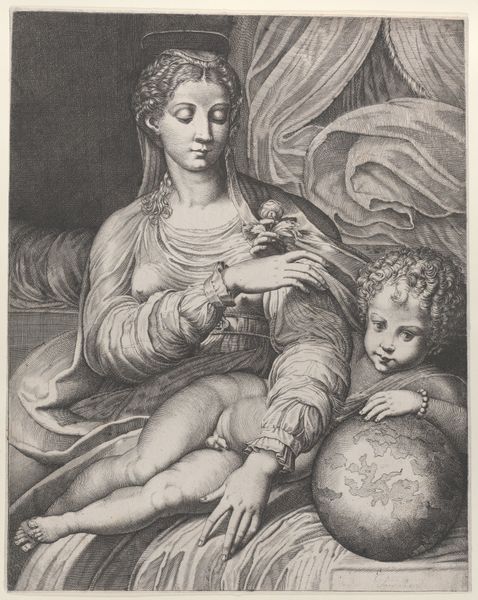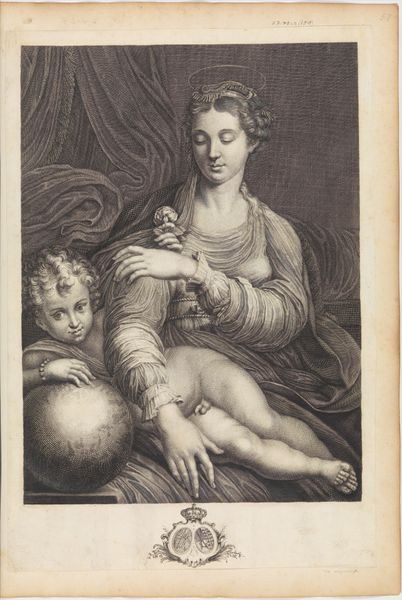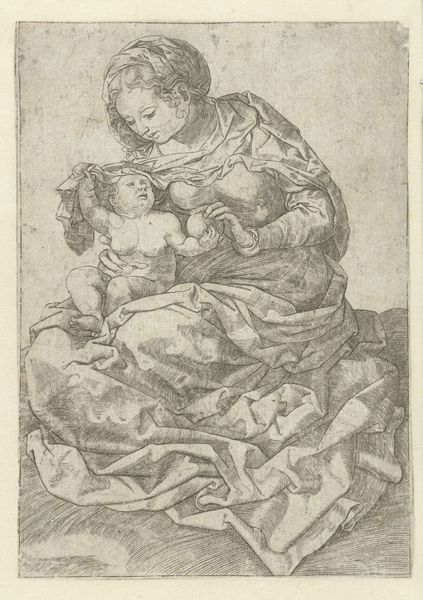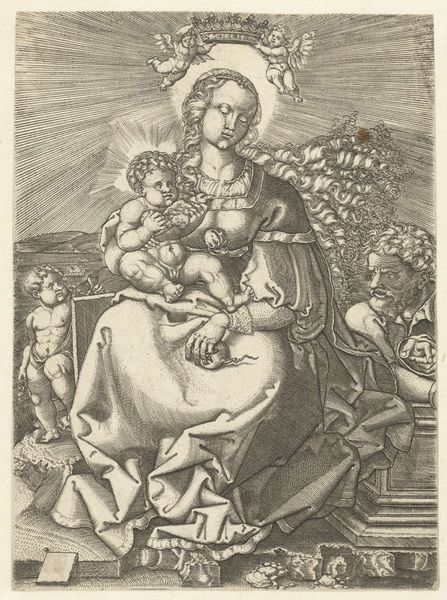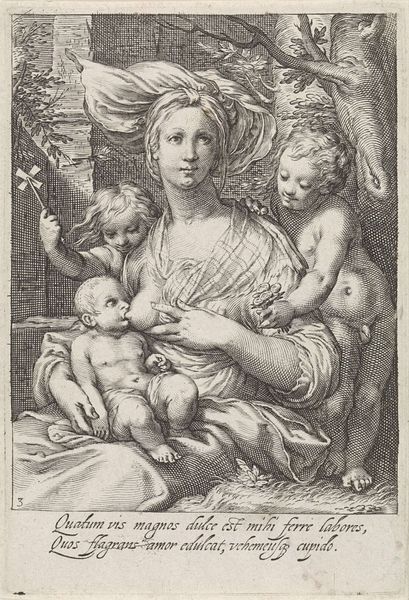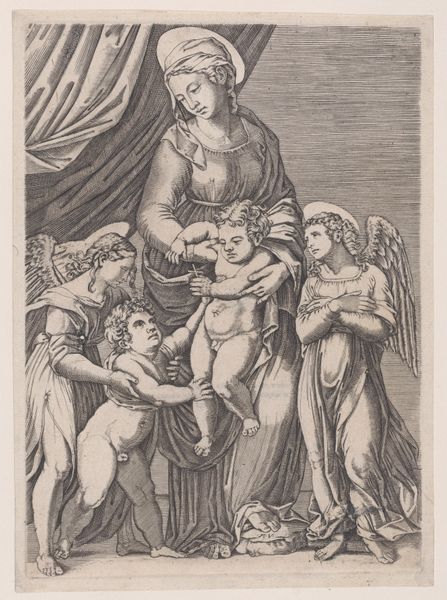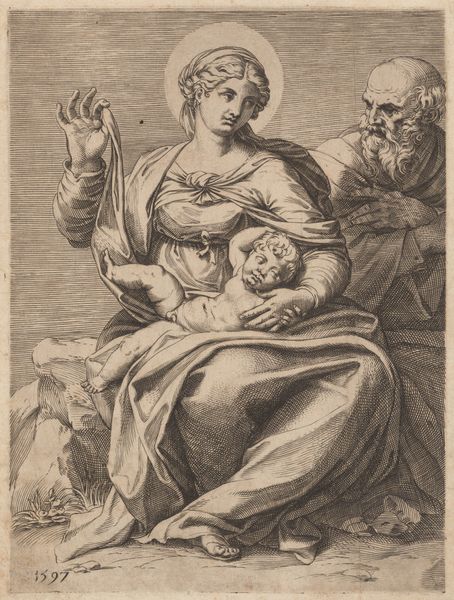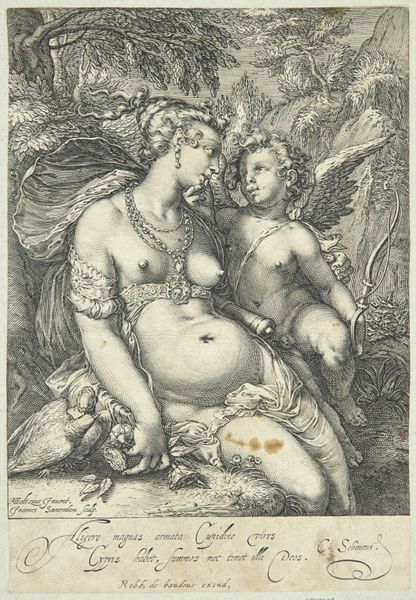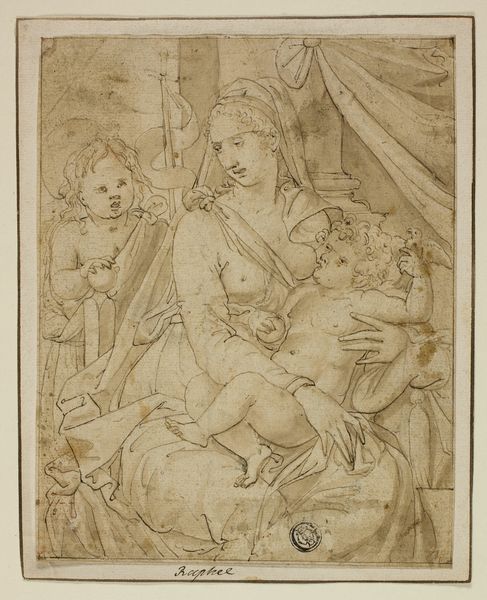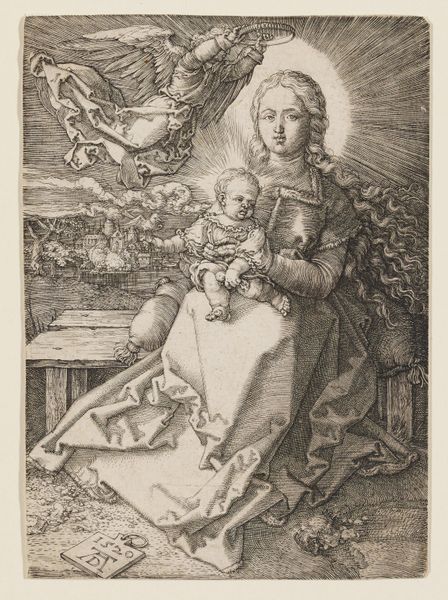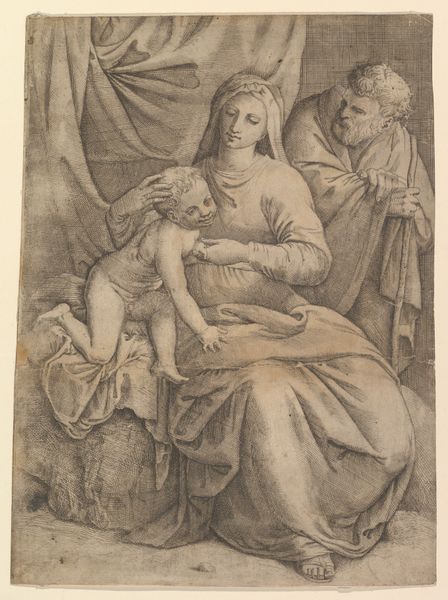
drawing, print, engraving
#
drawing
# print
#
figuration
#
madonna
#
child
#
history-painting
#
italian-renaissance
#
engraving
Copyright: Public Domain
Editor: Here we have "Madonna of the Rose," an engraving from sometime in the 16th or 17th century, artist unknown. There's something very serene and untouchable about the Madonna's face. What do you make of this print? Curator: It’s interesting how this print embodies both spiritual and political power dynamics. Look at the globe beneath the Christ child's hand. What does it signify to you, in the context of the Italian Renaissance, a period of intense exploration and colonialism? Editor: Well, I guess I see it as a representation of dominion, a symbol of Christian Europe's expanding influence over the world. Is that what you mean? Curator: Precisely. This Madonna isn't just a mother; she's a representation of power, legitimized by divine authority. The rose she holds, typically a symbol of love and beauty, can also be interpreted within the context of gendered expectations and societal constraints placed on women during that time. Is she offering the rose, or is it almost a burden? How might women have perceived such imagery, considering their limited agency in broader society? Editor: That’s a compelling question. I hadn't considered how women might have interpreted this. Maybe the rose is like a prescribed role…beautiful but restricting. Curator: Exactly! By understanding the socio-political context, we can dissect how images like the "Madonna of the Rose" were used to perpetuate particular ideologies and gender roles. Art isn’t just beautiful; it’s a loaded reflection of its time. Editor: This has really opened my eyes to seeing how even seemingly gentle religious art is connected to much larger power structures. Thank you! Curator: Absolutely! And remember, continuing to ask critical questions like these can unlock hidden layers of meaning within artworks and art history.
Comments
No comments
Be the first to comment and join the conversation on the ultimate creative platform.
